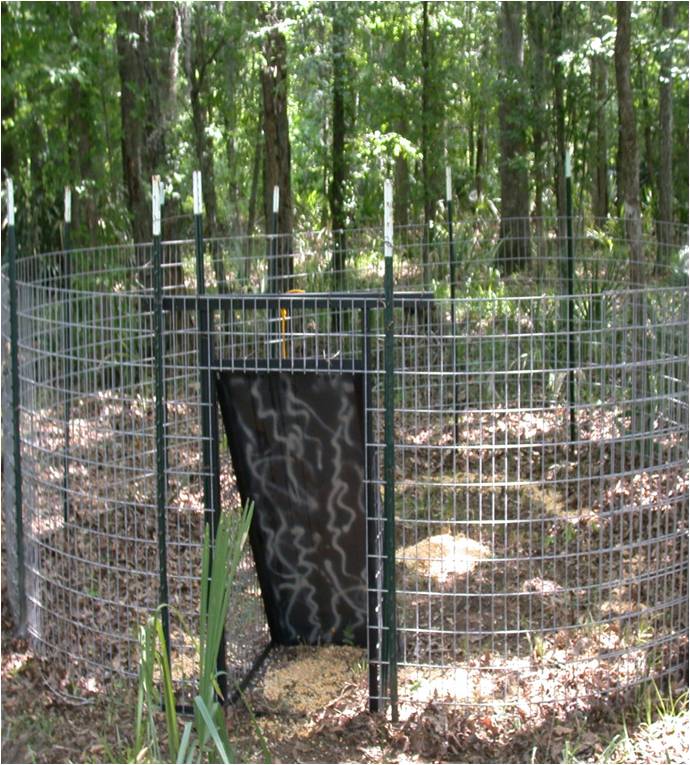Feral hog populations in Alabama and across the United States are growing at alarming rates, with agricultural damage estimates nationwide reaching $800 million annually. Control of this nuisance species is difficult and often entails countless man-hours and expense to Alabama landowners and wildlife managers. Live-trapping of feral hogs is the most cost effective method available to landowners for removing large numbers of feral hogs and decreasing the damage on a given property.
Enticing hogs to enter a trap is relatively easy; however, one common mistake that first-time hog trappers make is buying or building a trap, throwing bait in it, and setting the trigger. This technique can catch a few hogs, but trappers that pre-bait the trap and practice a little patience will be far more successful.
Pre-baiting of hog traps is a simple task. Once the trap is erected, tie the doors open so the door will not close or fall. Bait the trap heavily; whole kernel or soured corn works well. After baiting the trap, leave the area and inspect the trap every two or three days. Add additional bait as needed when checking the traps and inspect the trap for hog tracks, droppings and rooting. Leave the door on the trap tied open until evidence of multiple hogs entering the trap is observed. After determining that multiple hogs are entering the trap, untie the door of the trap and set the trigger. By pre-baiting the trap, the trap shyness of the hogs is decreased and the likelihood of catching multiple hogs the first night the trap is set is increased.
Adult sows and boars are intelligent and cautious. They usually are the last hogs to enter a new trap for the first time. Hog trappers who fail to pre-bait their traps usually catch juvenile hogs and fail to catch the adults. Since the adult sows drop piglets twice a year, it is very important to catch these adults for trapping to have any chance of reducing the population.
The use of motion-activated trail cameras to monitor the inside of the trap while pre-baiting can also increase success rates. Check the camera every time the trap is checked during the pre-baiting period and inspect the pictures carefully. Identify specific feral hogs by color, color patterns and size. Document the number of feral hogs in each sounder (family group of hogs) visiting the trap. The goal should be to remove the entire sounder. Monitoring the pictures at each trap site gives a trapper the ability to identify when all the hogs in a sounder have entered the trap and helps determine when trapping efforts will be the most successful.
Live-trapping feral hogs is the most cost-effective control method for eliminating large numbers of feral hogs from a given property. Pre-baiting traps and utilizing motion-activated trail cameras to identify when to set the trigger on a trap are two techniques to help anyone become a more efficient and successful trapper.






